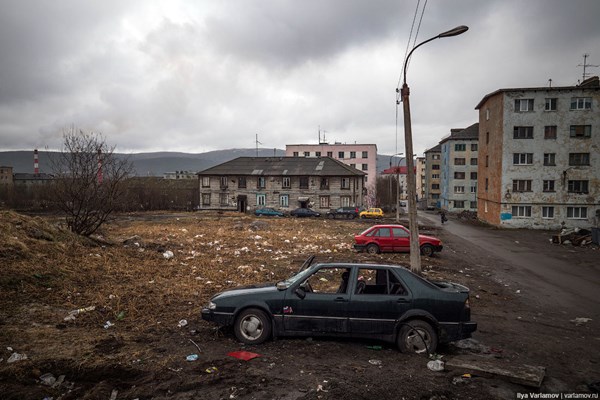Half of Russian regions in recession
With the Russian Federal State Statistics Service (Rosstat) recording a slowdown of Russia’s GDP, which grew by only 0.5% in the first quarter, the least since 2017, half of the country’s regions have already plunged into a recession reports finanz.ru.
At the end of March, an increase in economic activity was documented in only 42 of Russia’s 86 federal subjects, observes the Moscow-based Higher School of Economics (HSE) in its “Commentaries on the government and business”.
The number of growing regions has nearly halved compared to the 71 in February. At the same time, the number of subjects with clearly demonstrated growth encompassing at least four of the five key sectors (industry, wholesale and retail trade, paid services and construction) dropped from 41 to 18.
On the regional level, the Russian economy has barely escaped falling into a full-fledged decline. The composite regional economic activity (REA) index that is calculated by the HSE on a monthly basis dropped from 69% to 51.7% in March, a hair’s breadth from 50%, which differentiates growth from contraction.
The extent of the indicator’s decline is unprecedented since the start of 2015, when the economy was hit by the first round of sanctions and the collapse of the oil price.
“The decrease in economic activity has affected, first and foremost, the major regions with a significant gross regional product,” the HSE notes.
“Wholesale trade remained the most problematic sector, with the REA index at 35.4% signaling that, in the majority of Russian regions, the situation in this sector has deteriorated compared to last year,” the report remarks.
The drop in wholesale turnover has also been noted by Rosstat, declining by 9% overall in Russia in the first quarter.
This result is partially due to the decline in the amount of gas exported to Europe – roughly 10% year-on-year, according to Kirill Tremasov, director of the analysis department of Loco-Invest. Turkey has cut back the most, buying only 4.4 billion cubic meters of gas from Gazprom between January and March, the lowest since the start of the 2010s and only half as much as last year.
Construction and paid services also remain in the red, the HSE observes: the REA index in these sectors (37.8% and 47.6% respectively) has also crossed the 50% threshold. For the former, this is caused by a decrease in investments, and for the latter, by consumer demand that has been hammered with tax hikes, observes economist Natalia Orlova from Alfa-Bank.
April did not bring an improvement. The HSE’s composite anticipatory economic index moved from -1.3% to -2%, remaining negative for the sixth consecutive month.
Although an economic recession in the coming months is not inevitable, it is clearly growing more likely, the report’s authors warn.
Quarter-on-quarter, the economy is already in decline, Tremasov notes: In the first quarter, the seasonally adjusted GDP was around 1.6% less than in the previous quarter.
“This is the hugest drop since the 2008-9 crisis,” the expert remarks. Even at the peak of the sanction war, when oil dropped below $40 per barrel, the economy did not experience such a sharp decline.
The chief reason is the tax hike, which had both a direct effect (taking resources out of the economy that will only start to return several quarters later) and an indirect effect, increasing the costs for economic subjects and decreasing the inclination to invest, Tremasov explains.
